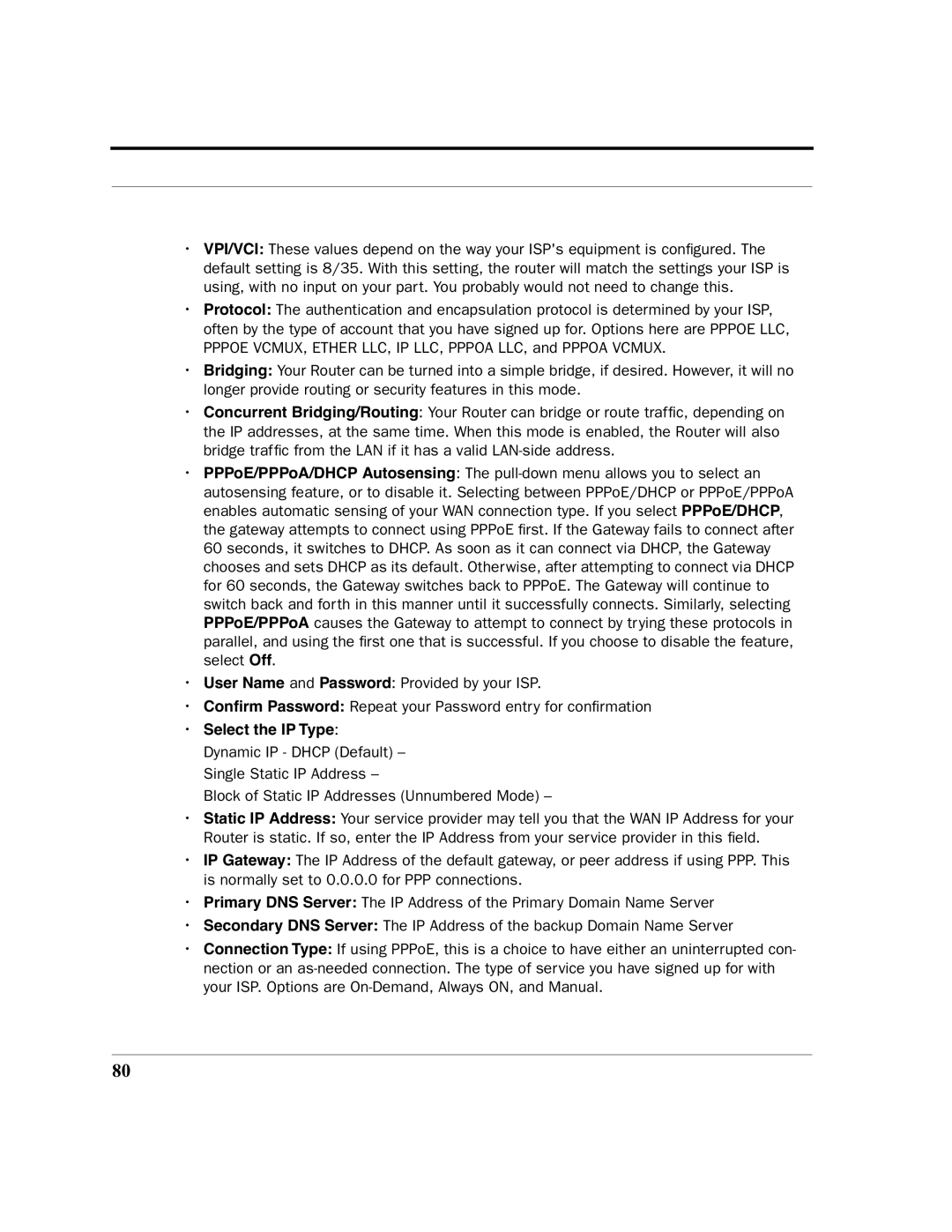
•VPI/VCI: These values depend on the way your ISP's equipment is configured. The default setting is 8/35. With this setting, the router will match the settings your ISP is using, with no input on your part. You probably would not need to change this.
•Protocol: The authentication and encapsulation protocol is determined by your ISP, often by the type of account that you have signed up for. Options here are PPPOE LLC, PPPOE VCMUX, ETHER LLC, IP LLC, PPPOA LLC, and PPPOA VCMUX.
•Bridging: Your Router can be turned into a simple bridge, if desired. However, it will no longer provide routing or security features in this mode.
•Concurrent Bridging/Routing: Your Router can bridge or route traffic, depending on the IP addresses, at the same time. When this mode is enabled, the Router will also bridge traffic from the LAN if it has a valid
•PPPoE/PPPoA/DHCP Autosensing: The
•User Name and Password: Provided by your ISP.
•Confirm Password: Repeat your Password entry for confirmation
•Select the IP Type:
Dynamic IP - DHCP (Default) – Single Static IP Address –
Block of Static IP Addresses (Unnumbered Mode) –
•Static IP Address: Your service provider may tell you that the WAN IP Address for your Router is static. If so, enter the IP Address from your service provider in this field.
•IP Gateway: The IP Address of the default gateway, or peer address if using PPP. This is normally set to 0.0.0.0 for PPP connections.
•Primary DNS Server: The IP Address of the Primary Domain Name Server
•Secondary DNS Server: The IP Address of the backup Domain Name Server
•Connection Type: If using PPPoE, this is a choice to have either an uninterrupted con- nection or an
80
